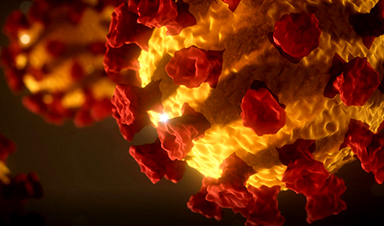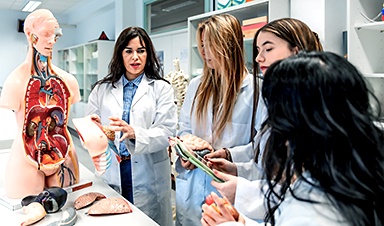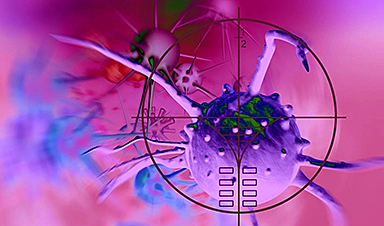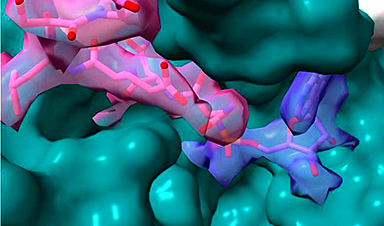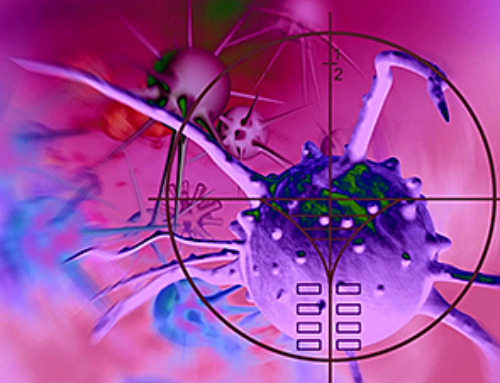When SARS-CoV-2 first began spreading across the globe, not every lab was equipped to study it directly. The virus behind the current pandemic is highly pathogenic and transmissible, leading the US Centers for Disease Control and Prevention to require many of the same biosafety guidelines that shape the study of diseases such as tuberculosis and Ebola.
As in many moments throughout the last year, the scientific community responded by creatively adapting existing tools to the study of COVID-19. Among these, researchers turned to models of the pathogen such as pseudoviruses and chimeric viruses that can be studied safely in labs with lower biosafety level (BSL) clearance than required for studying the wildtype version, in an effort to expand the study of the novel coronavirus. Pseudoviruses don’t replicate, rendering them harmless, but by replacing their surface envelope proteins with those of SARS-CoV-2, researchers can glean insights into the ways the pathogen infects cells. A chimeric virus is made by inserting the genetic material of one virus into the genome of another, safe surrogate, and these introduced sequences are passed on when the virus replicates.
In addition to their safety, pseudoviruses are “extremely versatile in that you can . . . introduce different envelope proteins and you can introduce mutations, which is making it extremely useful for us to screen a lot of different variants,” says Carol Weiss, a virologist who heads the laboratory of immunoregulation at the US Food and Drug Administration. “If you want to introduce mutations in real viruses, it’s a whole lot more work.”
An approximation of the real thing
Pseudoviruses were first developed in the 1960s, after scientists began studying a vesicular stomatitis virus (VSV) isolated from cattle. In addition to replicating well in culture, they later learned that its surface protein, VSV-G, facilitates entry into all eukaryotic cells, making the virus a useful vector not only as a pseudovirus but as a ferry to deliver DNA into cells for therapeutic purposes. The first Ebola vaccine was developed using a VSV platform, and more recently, the virus has been engineered to seek out and destroy cancer cells.
HIV-based platforms, which came about in the 1980s, have since replaced VSV as the most common model for developing both pseudo- and chimeric viruses. Unlike VSV’s negative-strand RNA genome that must be transcribed once inside the cell, HIV’s positive-strand RNA genome can instantly begin translation, making pseudoviruses based on HIV faster to produce. HIV-based model viruses have now been used in many of the same applications as VSV, with scientists applying them to the study of diseases such as AIDS, SARS, MERS, and influenza.
We wanted to really validate that the tool that we generated did appear exactly, with everything we could throw at it, the same way as SARS-CoV-2.
—Sean Whelan, Washington University
To harness these surrogates to study SARS-CoV-2, researchers first needed to prove that their pseudo- and chimeric viruses are viable stand-ins for the real thing. SARS-CoV-2 is a uniquely bulky virus—its genome is roughly 30 kilobases, while HIV and VSV sit around 10 kilobases—and while it is more similar to HIV, none of the three are closely related. Fortunately, both HIV and VSV appear to be compatible for making coronavirus models.
Sean Whelan, a virologist at Washington University in St. Louis, is one of many scientists who has developed a viable chimeric virus platform and quantified its performance in the face of antibodies against the real thing. To do this, he developed two complimentary assays—one for use in infectious disease laboratories with the BSL-3 clearance required to handle live SARS-CoV-2 and another for labs working under a lower, BSL-2 clearance—and studied how each virus responded to a battery of different treatments. It wasn’t enough, he says, to test the viruses’ ability to evade just one type of antibody, so he used monoclonal and polyclonal antibodies and serum from recovered COVID-19 patients—as well as a type of ACE2 decoy protein suggested as a possible therapeutic to draw the virus away from the cells’ own receptor. “We wanted to really validate that the tool that we generated did appear exactly, with everything we could throw at it, the same way as SARS-CoV-2.”
Image Credit: Envato / Amanda Scott
Post by Amanda Scott, NA CEO. Follow her on twitter @tantriclens
Thanks to Heinz V. Hoenen. Follow him on twitter: @HeinzVHoenen
News
Repurposed drugs could calm the immune system’s response to nanomedicine
An international study led by researchers at the University of Colorado Anschutz Medical Campus has identified a promising strategy to enhance the safety of nanomedicines, advanced therapies often used in cancer and vaccine treatments, [...]
Nano-Enhanced Hydrogel Strategies for Cartilage Repair
A recent article in Engineering describes the development of a protein-based nanocomposite hydrogel designed to deliver two therapeutic agents—dexamethasone (Dex) and kartogenin (KGN)—to support cartilage repair. The hydrogel is engineered to modulate immune responses and promote [...]
New Cancer Drug Blocks Tumors Without Debilitating Side Effects
A new drug targets RAS-PI3Kα pathways without harmful side effects. It was developed using high-performance computing and AI. A new cancer drug candidate, developed through a collaboration between Lawrence Livermore National Laboratory (LLNL), BridgeBio Oncology [...]
Scientists Are Pretty Close to Replicating the First Thing That Ever Lived
For 400 million years, a leading hypothesis claims, Earth was an “RNA World,” meaning that life must’ve first replicated from RNA before the arrival of proteins and DNA. Unfortunately, scientists have failed to find [...]
Why ‘Peniaphobia’ Is Exploding Among Young People (And Why We Should Be Concerned)
An insidious illness is taking hold among a growing proportion of young people. Little known to the general public, peniaphobia—the fear of becoming poor—is gaining ground among teens and young adults. Discover the causes [...]
Team finds flawed data in recent study relevant to coronavirus antiviral development
The COVID pandemic illustrated how urgently we need antiviral medications capable of treating coronavirus infections. To aid this effort, researchers quickly homed in on part of SARS-CoV-2's molecular structure known as the NiRAN domain—an [...]
Drug-Coated Neural Implants Reduce Immune Rejection
Summary: A new study shows that coating neural prosthetic implants with the anti-inflammatory drug dexamethasone helps reduce the body’s immune response and scar tissue formation. This strategy enhances the long-term performance and stability of electrodes [...]
Scientists discover cancer-fighting bacteria that ‘soak up’ forever chemicals in the body
A family of healthy bacteria may help 'soak up' toxic forever chemicals in the body, warding off their cancerous effects. Forever chemicals, also known as PFAS (per- and polyfluoroalkyl substances), are toxic chemicals that [...]
Johns Hopkins Researchers Uncover a New Way To Kill Cancer Cells
A new study reveals that blocking ribosomal RNA production rewires cancer cell behavior and could help treat genetically unstable tumors. Researchers at the Johns Hopkins Kimmel Cancer Center and the Department of Radiation Oncology and Molecular [...]
AI matches doctors in mapping lung tumors for radiation therapy
In radiation therapy, precision can save lives. Oncologists must carefully map the size and location of a tumor before delivering high-dose radiation to destroy cancer cells while sparing healthy tissue. But this process, called [...]
Scientists Finally “See” Key Protein That Controls Inflammation
Researchers used advanced microscopy to uncover important protein structures. For the first time, two important protein structures in the human body are being visualized, thanks in part to cutting-edge technology at the University of [...]
AI tool detects 9 types of dementia from a single brain scan
Mayo Clinic researchers have developed a new artificial intelligence (AI) tool that helps clinicians identify brain activity patterns linked to nine types of dementia, including Alzheimer's disease, using a single, widely available scan—a transformative [...]
Is plastic packaging putting more than just food on your plate?
New research reveals that common food packaging and utensils can shed microscopic plastics into our food, prompting urgent calls for stricter testing and updated regulations to protect public health. Beyond microplastics: The analysis intentionally [...]
Aging Spreads Through the Bloodstream
Summary: New research reveals that aging isn’t just a local cellular process—it can spread throughout the body via the bloodstream. A redox-sensitive protein called ReHMGB1, secreted by senescent cells, was found to trigger aging features [...]
AI and nanomedicine find rare biomarkers for prostrate cancer and atherosclerosis
Imagine a stadium packed with 75,000 fans, all wearing green and white jerseys—except one person in a solid green shirt. Finding that person would be tough. That's how hard it is for scientists to [...]
Are Pesticides Breeding the Next Pandemic? Experts Warn of Fungal Superbugs
Fungicides used in agriculture have been linked to an increase in resistance to antifungal drugs in both humans and animals. Fungal infections are on the rise, and two UC Davis infectious disease experts, Dr. George Thompson [...]
